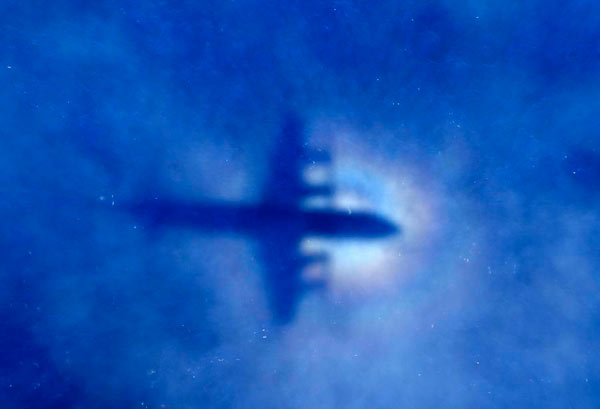A year on, what's the latest in the hunt for Flight 370?
Updated: 2015-03-08 09:53
(Agencies)
|
||||||||
Q: How is the search being conducted?
A: There are four ships, each with around 30 people on board, combing the priority zone. Three of the ships are dragging sonar devices called "towfish" just above the seabed to scan for wreckage. In January, a fourth ship, the Fugro Supporter, joined the hunt.
The Supporter is using an autonomous underwater vehicle _ essentially an unmanned submarine _ that can more easily maneuver along the mountainous, uneven seabed in a few areas the towfish can't fully cover. Unlike the towfish, the underwater drone doesn't send real-time data back to the ship, so crews must haul it up at the end of each 24- to 36-hour mission to download the data.
The ships head back to shore every four weeks or so to get fresh supplies _ a trip that takes up to six days each way.
Q: Are searchers still looking for floating wreckage?
A: Technically, yes, says Martin Dolan, chief commissioner of the Australian Transport Safety Bureau, which is leading the search. After studying the area's currents, Australian officials asked Indonesia in August to watch for any debris that might have floated west to the island nation's shores. Officials are now reviewing their drift modeling to see whether they need to revise their projections of where debris could have ended up. But because so much time has passed, Dolan says all surface debris likely sank long ago.
Q: Do the chances of finding the plane in the priority zone become less likely as the search drags on?
A: No, Dolan says, because they haven't been able to pinpoint any areas within the search zone where the plane would have had a higher probability of crashing. Officials could only narrow down the most likely crash site to the 60,000-square-kilometer (23,000-square-mile) priority zone. "Some people think there's a hot spot in there that should be a starting point, but it's pretty much equal priority across that area," Dolan says. "So it's no great surprise that having covered 40 percent, we haven't located it yet. It might be down to the last 1 percent before we do."
- Malaysia: If MH370 not found, it's back to the drawing board
- One year on, MH370 scar still hurts
- One year later: Benefits from the search for MH370
- One year on, MH370 theories abound
- Alien abduction? Stolen? MH370 theories keep coming
- Airlines move to better track planes a year after Flight 370
- Australia says hunt for missing MH370 jet may be called off soon

 Apple unveiled 1st wearable watch
Apple unveiled 1st wearable watch
 Children perform 'Ballad of Mulan' in NYC
Children perform 'Ballad of Mulan' in NYC
 Rally in New York supports indicted Chinese-American police officer
Rally in New York supports indicted Chinese-American police officer
 Traditional villages: Home of Chinese culture
Traditional villages: Home of Chinese culture
 Daily snapshots of 'two sessions' - March 8
Daily snapshots of 'two sessions' - March 8
 Brazilian soccer stars prosper in China
Brazilian soccer stars prosper in China
 Chinese FM gives press conference for NPC session
Chinese FM gives press conference for NPC session
 One Minute: 'Bizarre' TV scenes and subsidies for hiring women
One Minute: 'Bizarre' TV scenes and subsidies for hiring women
Most Viewed
Editor's Picks

|

|

|

|

|

|
Today's Top News
US slaps tougher sanctions on Venezuelan officials
Xiaomi to enter bullish Brazilian market
Clinton remains silent as questions mount over email scandal
Prince Charles, Camilla to visit Washington-area sites
China, US should look forward with sincerity
China in TPP 'a good thing': ex-Rep
University of Virginia opens office in China
China to stricly regulate e-commerce industry
US Weekly

|

|









